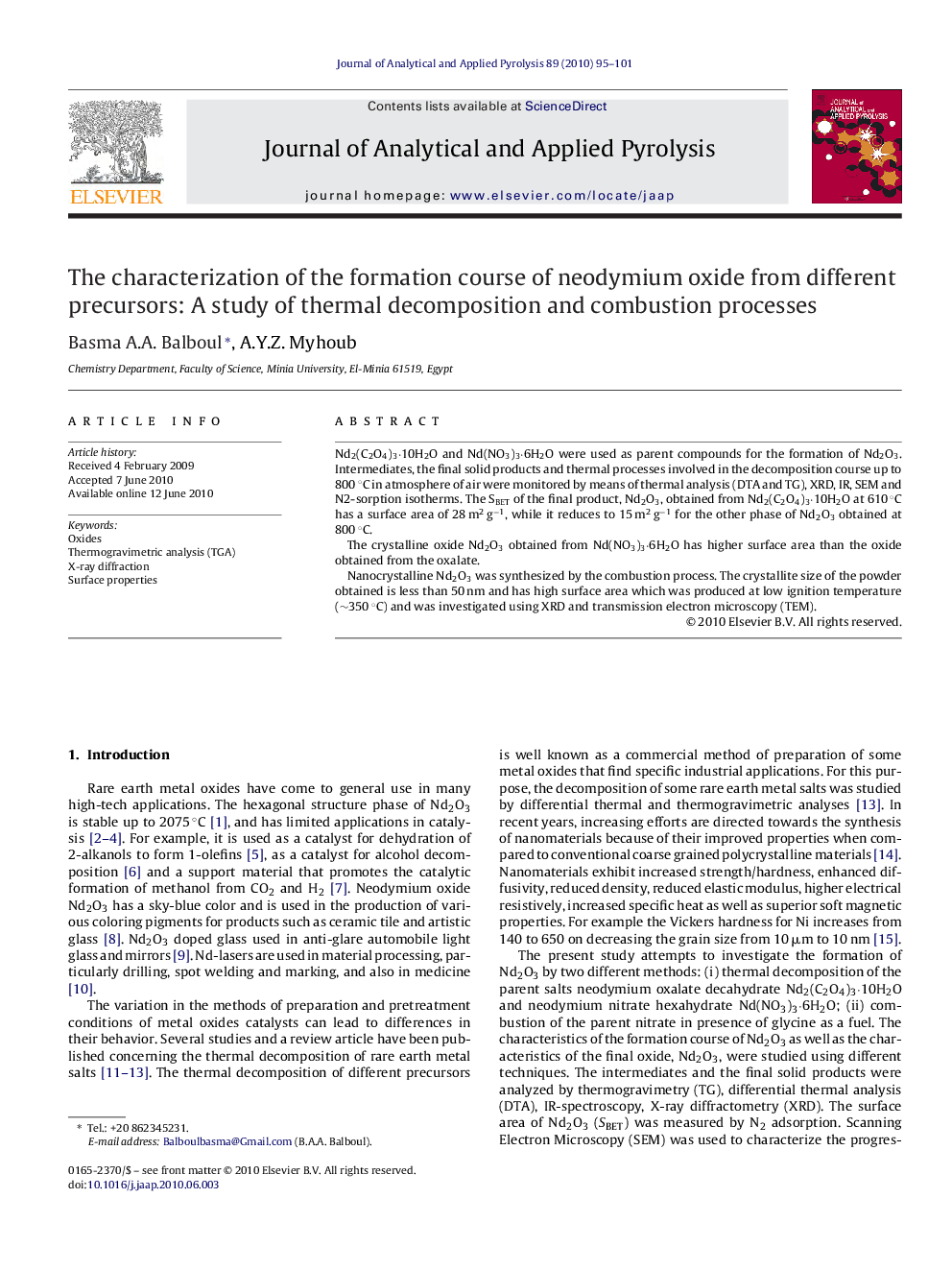| Article ID | Journal | Published Year | Pages | File Type |
|---|---|---|---|---|
| 1197059 | Journal of Analytical and Applied Pyrolysis | 2010 | 7 Pages |
Nd2(C2O4)3·10H2O and Nd(NO3)3·6H2O were used as parent compounds for the formation of Nd2O3. Intermediates, the final solid products and thermal processes involved in the decomposition course up to 800 °C in atmosphere of air were monitored by means of thermal analysis (DTA and TG), XRD, IR, SEM and N2-sorption isotherms. The SBET of the final product, Nd2O3, obtained from Nd2(C2O4)3·10H2O at 610 °C has a surface area of 28 m2 g−1, while it reduces to 15 m2 g−1 for the other phase of Nd2O3 obtained at 800 °C.The crystalline oxide Nd2O3 obtained from Nd(NO3)3·6H2O has higher surface area than the oxide obtained from the oxalate.Nanocrystalline Nd2O3 was synthesized by the combustion process. The crystallite size of the powder obtained is less than 50 nm and has high surface area which was produced at low ignition temperature (∼350 °C) and was investigated using XRD and transmission electron microscopy (TEM).
